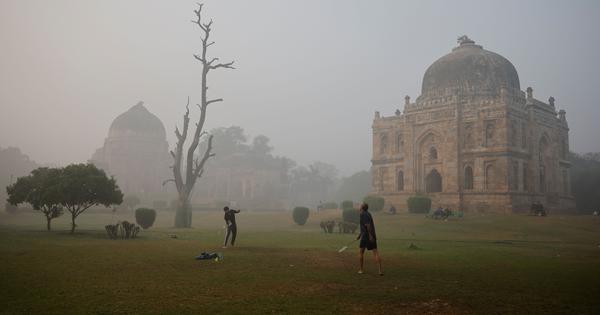
The Air Quality Index at 18 of the 39 monitoring stations in Delhi on Thursday recorded readings above 400, categorised as “severe”, showed the Sameer application, which provides hourly updates published by the Central Pollution Control Board, at 1.06 pm.
The application did not have any data from one of the stations at the time.
Despite ongoing restrictions to curb pollution, Delhi’s average AQI stood at 394, placing it at the higher end of the “very poor” category, the data showed.
An index value between 0 and 50 indicates “good” air quality, between 51 and 100 indicates “satisfactory” air quality and between 101 and 200 indicates “moderate” air quality. As the index value increases further, air quality deteriorates. A value of 201 and 300 means “poor” air quality, while between 301 and 400 indicates “very poor” air.
Between 401 and 450 indicates “severe” air pollution, while anything above the 450 threshold is termed “severe plus”.
An Air Quality Index in the “severe” category signifies hazardous pollution levels that can pose serious risks even to healthy individuals.
In areas adjoining the national capital, Ghaziabad recorded the most severe pollution levels with an AQI of 430, followed by Noida, which logged 409. Greater Noida reported “very poor” air quality with an index of 384.
In Haryana, Gurugram registered an AQI of 303, placing it in the “very poor” category, while Faridabad recorded an AQI of 257.
Delhi has been recording air quality in the “poor” or worse categories since mid-October, leading to Stage 3 restrictions under the Graded Response Action Plan being imposed on November 11.
GRAP is a set of incremental anti-pollution measures that are triggered to prevent further worsening of air quality once it reaches a certain threshold in the Delhi-NCR region.
Restrictions under Stage 3 entail a ban on non-essential construction work and the closure of stone crushers and mining activities, in addition to the measures already imposed under Stage 1 and Stage 2.
They also include the shifting of primary school up to Class 5 to hybrid mode. Parents and students have the option to choose between offline and online classes wherever available.
Additionally, the use of BS-III petrol and BS-IV diesel cars is restricted in Delhi and the NCR. BS norms, or Bharat Stage Emission Standards, are regulations set by the Indian government to control air pollutants from motor vehicles.
Air quality deteriorates sharply in the winter months in Delhi, which is often ranked the world’s most polluted capital.
Stubble burning in Punjab and Haryana, along with the lighting of firecrackers, vehicular pollution, falling temperatures, decreased wind speeds and emissions from industries and coal-fired plants contribute to the problem.
On Wednesday, the Supreme Court asked the Commission for Air Quality Management to consider shifting sports activities scheduled in November and December in Delhi and the national capital region to “safer and less susceptible months”.
It ordered that matters pertaining to air pollution in the capital be heard on a monthly basis, so as to monitor the measures being taken by the authorities.
The air quality panel was also told the commission that it was allowed to take “any proactive measure” to curb air pollution, The Hindu reported.
On Monday, the Supreme Court declined to impose year-round restrictions on activities prohibited under GRAP holding that the national capital “cannot be brought to a standstill” in the name of fighting air pollution.
Also read: Why air quality numbers in Delhi vary widely
📰 Crime Today News is proudly sponsored by DRYFRUIT & CO – A Brand by eFabby Global LLC
Design & Developed by Yes Mom Hosting






